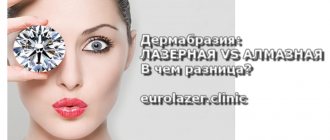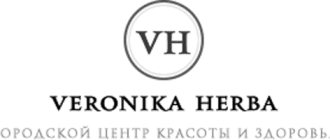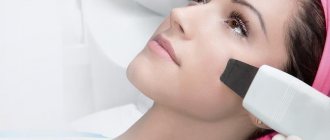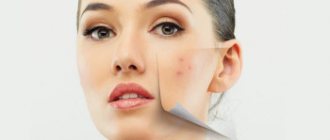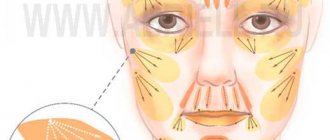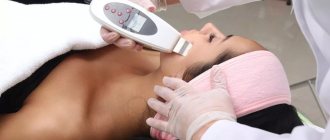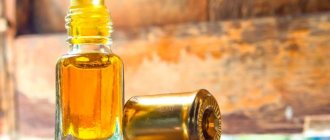At any age, a person wants to be beautiful and attractive. The appearance of wrinkles, dull complexion, age spots and unevenness on the skin do not add youth and good mood to us.
However, with the development of new technologies, it has become much easier to “erase” wrinkles and other signs of age and skin defects.
One of the most effective non-surgical techniques that help achieve an excellent rejuvenation effect today is laser resurfacing (or laser dermabrasion , laser peeling ). Laser facial resurfacing, which helps achieve skin rejuvenation from the outside and inside, without the use of plastic surgery, was appreciated by both doctors and patients.
Interestingly, lasers began to be used for medical purposes back in the 60s of the last century. Using a laser beam, rough scars and scars were “erased” from the skin. And 30 years later, with the development of technologies that make it possible to accurately direct the laser beam to the right place and to the right depth, laser skin resurfacing appeared.
1
Laser dermabrasion in MedicCity
2 Laser dermabrasion in MedicCity
3 Laser dermabrasion in MedicCity
Types of laser resurfacing
There are 3 types of laser resurfacing:
- surface grinding (laser peeling);
- middle grinding;
- 2-stage deep laser resurfacing.
In order to “refresh” young skin (patients under the age of 35), laser peeling . With its help, only the superficial layers of the skin are removed, so rehabilitation occurs quite quickly, in about 5 days.
Patients aged 45 to 55 years who require correction of age-related changes are usually treated with midline laser resurfacing . This technique helps to remove ptosis of the eyelids, cheek-zygomatic area, and pronounced wrinkles on the face. During mid-laser resurfacing, about 50% of skin cells are removed, so the rehabilitation period in this case is longer - from 7 to 12 days. This type of treatment is extremely effective for laser resurfacing of scars, laser resurfacing of scars and laser resurfacing of stretch marks.
When rejuvenating the skin of patients over 50-55 years old, it is best to use deep laser facial resurfacing . Such a serious procedure is carried out under anesthesia in a hospital setting and consists of removing the entire surface layer of skin with subsequent activation of restoration processes in the tissues.
Reviews about laser facial resurfacing on the Internet say that the rejuvenating effect of this procedure lasts 10-15 years.
Who is dermabrasion indicated for?
Dermabrasion with the device is effective in the following cases:
- When you need to get rid of a network of fine wrinkles
- Sagging skin caused by natural aging processes
- Uneven complexion
- The need to remove tattoos
- Postoperative scars, scars, burn defects
- Post-acne, darkening of the skin after pimples, acne consequences
The choice of dermabrasion method is determined by a plastic surgeon, depending on the condition of the dermis and the indications for a particular method of resurfacing. Some patients are not recommended to undergo deep dermabrasion with the device in one session; then the procedure is carried out in several stages, as a result of which the desired effect is achieved.
Mechanical dermabrasion
The device, which is used for mechanical dermabrasion, has several abrasive attachments that rotate at high speed, abrading the top layer of skin. The doctor determines how deep the grinding will be based on electronic readings. This is a particularly important point, since excessive exposure can cause even more damage than before the dermabrasion device. Using mechanical dermabrasion, a special apparatus removes the upper keratinized cells of the skin. This helps to launch natural regeneration processes. Enhanced renewal begins, the skin is saturated with natural collagen, new cells are filled with hyaluronic acid, which tends to form in a fresh layer. Mechanical dermabrasion with a device is an excellent way to get rid of keloid scars, tattoos, stubborn dirt and dust (for example, from hazardous work in coal mines or construction sites). The device removes pronounced freckles, deep wrinkles, and scars.
Laser skin dermabrasion
Modern medicine has long been using lasers to perform high-precision operations. Its advantage, first of all, is that the device acts locally, without damaging neighboring tissues, and also allows you to control blood clotting. The recovery period after exposure to a laser device is minimized. All these advantages apply to resurfacing the skin of the face and body with laser dermabrasion.
The essence of the method of treating the dermis with this device is that the doctor acts on the required area with a directed laser. The depth of penetration is controlled by the electronic component of the device. Micro-explosions form on the surface, after which the skin area self-destructs over time by the body. New young tissue is formed at the site of exposure. Today, exposure to a laser device can be pulsed to achieve the best result. After the recovery period, there is an improvement in complexion and turgor, increased production of collagen and elastin leads to the smoothing of wrinkles and increased skin elasticity.
What lasers are used in skin resurfacing?
The following types of lasers are used for laser skin resurfacing:
- CO2 laser (maximum effect of the procedure, but longer rehabilitation period);
- erbium laser (acts more gently, so the skin recovers faster);
- low-intensity laser (the most gentle on the skin, but the effect is somewhat less).
Features of CO2 laser operation
This is one of the first lasers used in the 1960s to eliminate skin scars, wrinkles, and excision of various skin tumors.
Using carbon dioxide laser dermabrasion, you can remove pigmentation on the skin, get rid of wrinkles, and improve skin color and turgor. The peculiarity of this laser is its ability to penetrate to a certain depth of the skin (up to 50 microns).
Erbium laser dermabrasion
The erbium laser was introduced in 1990 and is considered the “gold standard” for skin resurfacing.
The radiation from an erbium laser has a lower wavelength and greater absorption than that of a carbon dioxide laser. Therefore, dermabrasion with an erbium laser has a more gentle effect; its beam is divided into many small beams. During regeneration, healthy areas begin to connect over damaged ones, and the skin recovers much faster. Reviews of laser dermabrasion report the successful use of the technique on the eyelids and neck.
1 Dermablate Effect
2 Dermablate Effect
3 Laser dermabrasion
Indications and contraindications for facial dermabrasion
Facial dermabrasion is prescribed and performed subject to indications for the procedure. These include:
- scars after smallpox, acne or acne;
- small and medium wrinkles;
- chronic peeling of the skin due to the development of hyperkeratosis;
- rosacea or rosacea;
- scars after injury or surgery;
- stretch marks;
- excessive pigmentation of the skin;
- tattoos that need to get rid of.
The main advantage of dermabrasion is the complete or partial removal of even serious skin defects. Due to the fact that the procedure is performed under local anesthesia, there are no negative consequences for the body as a whole. Another important advantage is the affordable cost when compared with plastic surgery.
But skin resurfacing has a number of contraindications that must be taken into account. Dermabrasion is prohibited if there are active inflammatory processes on the skin or if there is a risk of the formation of hypertrophic and keloid scars. At the time of the procedure, the patient must be in satisfactory health. The development of infection, elevated body temperature, systemic blood diseases, severe cardiac pathologies, liver or kidney failure are a direct contraindication.
The essence of the method
At the MedicCity clinic you can undergo skin resurfacing using the Dermablate Effect erbium laser.
During the procedure, targeted layer-by-layer evaporation of skin cells occurs. The effect is on obsolete tissues and does not affect healthy ones. Since skin cells are constantly reproducing, this promotes the growth of renewed, youthful, healthy skin.
The depth of laser resurfacing is determined by the degree of age-related changes and is selected individually.
The procedure at MedicCity is carried out by experienced cosmetologists who accurately measure the depth of exposure of the laser beam. The special cooling function that the equipment is equipped with makes the procedure more comfortable.
Laser resurfacing. Photos before and after
Possible contraindications
Mechanical peeling should not be used by people with severely inflamed skin, including when there is suppuration. It is also not recommended for those whose skin is prone to the formation of keloid scars or has cancerous tumors. It is not recommended for people who have recently undergone plastic surgery or have a high sensitivity to cold.
Dermabrasion is not done during a cold or flu.
In addition, there is a list of diseases for which this procedure is not permitted:
- heart, kidney or liver disease;
- oncological diseases;
- tuberculosis;
- bleeding disorder, epilepsy.
How does the procedure work?
Before performing laser facial resurfacing, anesthesia is performed. The eyes are protected with special glasses, the face is removed, and the skin is treated with an antiseptic.
There may be pain during the procedure (many reviews of laser resurfacing speak about this). Heated skin is soothed by the supply of a cold stream of air. The total time spent on treating the entire face is about 2 hours, for partial treatment - approximately 45 minutes.
The face after laser resurfacing will look like after a thermal burn; swelling and pain may be observed. But after a certain time (the period of complete rehabilitation is about 2 weeks), you will be pleased with the result - younger and refreshed skin.
Laser resurfacing is a non-surgical technique and does not cause harm to health. However, if something bothers you (for example, a rash appears), be sure to consult with your doctor, who will help eliminate the unpleasant manifestations.
1 Laser resurfacing
2 Laser resurfacing
3 Laser resurfacing
Facial skin care after resurfacing
After procedures aimed at removing the stratum corneum, it is necessary to help the skin recover. After using home dermabrasion devices, active tissue regeneration occurs. In order for it to take place in the most favorable conditions, it is necessary to provide the skin with optimal care. Even a dermabrasion machine at home causes microdamage that is invisible to the eye, while the skin needs to be nourished and moisturized.
If deep dermabrasion was performed, for example with a laser or mechanical in several stages, then for the first six months it is necessary to protect the face from exposure to direct sunlight. It is better to apply a protective cream. During the cold season, you should also use weather protection. You should be careful about visiting baths and saunas, and it is better to exclude them from your life for six months.
The dermabrasion procedure allows you to solve several problems at the same time. It is aimed at improving skin quality and restoring natural processes. Dermabrasion starts metabolic processes, promotes the production of collagen and elastin, new cells are saturated with water and oxygen. Professional dermabrasion is available to perform at home. All you need is to select the most suitable device and carry out the procedure in a periodic course.
Indications for laser resurfacing
The procedure solves a huge number of dermatological and aesthetic problems, among which are the following:
- the presence of scars, scars and stretch marks;
- increased oily skin, acne and post-acne;
- presence of circles under the eyes;
- distinct wrinkles around the eyes, on the forehead and near the lips;
- noticeable pores on the face;
- sluggish, dull skin;
- the appearance of age spots and freckles.
In addition, laser resurfacing is effective in removing moles, papillomas and warts.
Laser stretch mark removal
Laser resurfacing can significantly smooth out rough stretch marks on the skin even after one session. Resurfacing of stretch marks is carried out under the strict supervision of a doctor. However, success also depends on the patient’s willingness to cooperate with the doctor and strictly follow all his recommendations. If the course of treatment is interrupted and the doctor’s recommendations are not followed, the results may be unsatisfactory for you. To avoid the appearance of pigmentation, the patient after the procedure must limit exposure to the open sun, as well as use sunscreen, restorative and bleaching agents.

